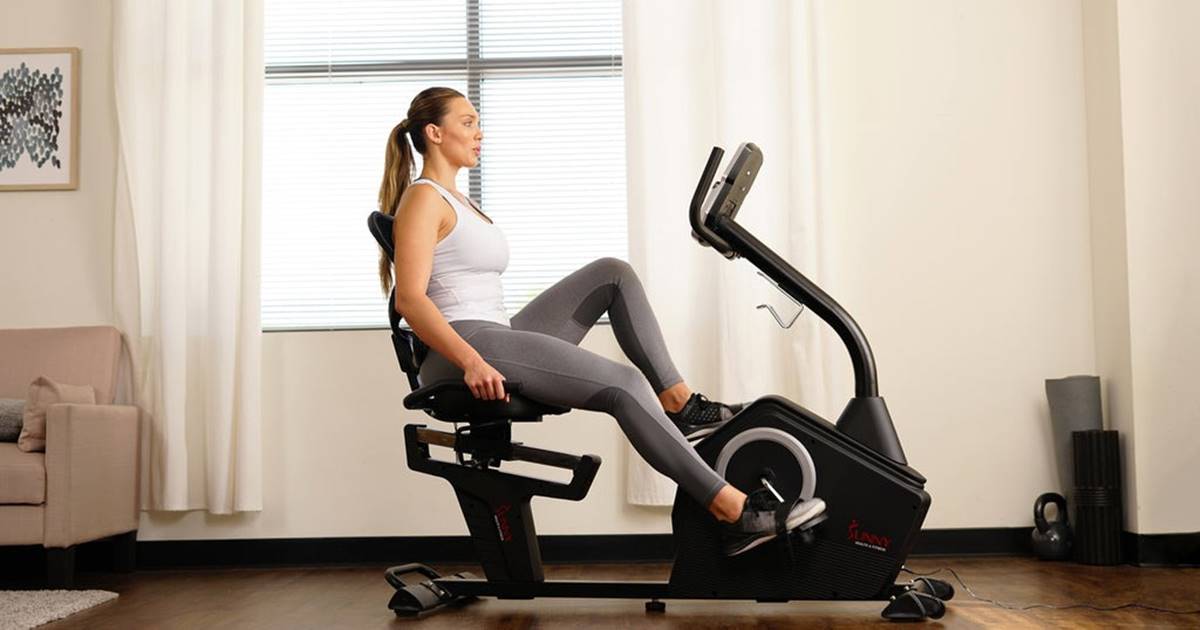

Featured
How To Calculate Heart Rate For Exercise
Published: September 28, 2023
Learn how to calculate your heart rate for exercise with our featured guide. Follow our step-by-step instructions to ensure your workouts are effective and safe.
Introduction
When it comes to exercise, understanding and monitoring your heart rate is essential for achieving optimal results. Your heart rate is a measure of how many times your heart beats per minute, and it provides valuable insights into your cardiovascular fitness and overall health. By calculating and tracking your heart rate during exercise, you can customize your workouts, ensure you’re working at the appropriate intensity, and maximize the efficiency of your training sessions.
Whether you’re a novice or a seasoned athlete, monitoring your heart rate can help you reach your fitness goals more effectively. It allows you to tailor your workouts to your individual needs, ensuring that you exercise safely and avoid overexertion.
Calculating heart rate for exercise involves determining your resting heart rate, maximum heart rate, and target heart rate zone. Each of these variables provides important information that can guide your workout routines and help you make the most out of every session.
In this article, we will explore the importance of calculating heart rate for exercise and discuss the various factors that can affect your heart rate. We will also delve into different methods of determining your heart rate for exercise and highlight the benefits of tracking your heart rate during workouts.
Are you ready to take your exercise routine to the next level? Let’s dive in and discover how calculating your heart rate can revolutionize your fitness journey.
Importance of Calculating Heart Rate for Exercise
Calculating your heart rate for exercise is crucial for several reasons. It provides valuable insights into your cardiovascular health and helps you optimize your workouts to achieve your fitness goals. Let’s explore the importance of calculating heart rate for exercise:
1. Customized Workouts: Understanding your heart rate allows you to tailor your workouts to your specific needs. By calculating your heart rate, you can determine the appropriate intensity for your exercise routines. This ensures that you’re neither overexerting yourself nor undertraining, resulting in more efficient and effective workouts.
2. Fitness Assessment: Monitoring your heart rate during exercise serves as a fitness assessment tool. By tracking changes in your heart rate over time, you can gauge improvements in your cardiovascular fitness. If your heart rate decreases for the same level of exertion, it indicates an improvement in your fitness level.
3. Fat Burning Zone: Calculating your heart rate helps identify your fat burning zone. This is the range at which your body primarily burns fat as fuel during exercise. By exercising within this heart rate zone, you can maximize fat loss and optimize your weight management efforts.
4. Cardiovascular Health: Your heart rate provides insights into your cardiovascular health and the efficiency of your heart. Regular exercise within the appropriate heart rate range improves heart health, strengthens the heart muscle, and reduces the risk of cardiovascular diseases.
5. Avoid Overtraining: Monitoring your heart rate prevents overtraining, which can lead to injuries, fatigue, and burnout. By staying within the recommended heart rate zones for your fitness level, you can ensure that you’re pushing yourself enough to improve but not pushing your body beyond its limits.
6. Workout Efficiency: Understanding your heart rate enables you to determine the effectiveness of your workouts. By analyzing changes in heart rate during exercise, you can identify which exercises or routines yield the greatest cardiovascular benefits, allowing you to optimize your training regimen and save time.
Calculating your heart rate for exercise is a key component in monitoring your fitness progress and ensuring your workouts are safe and effective. By understanding the importance of heart rate in exercise, you can take control of your fitness journey and achieve your desired results.
Factors Affecting Heart Rate
Several factors can influence your heart rate during exercise. Understanding these factors is important as it enables you to accurately assess and adjust your workout intensity. Let’s explore the key factors that affect heart rate:
1. Fitness Level: Your current fitness level plays a significant role in determining your heart rate during exercise. A person who is more physically fit will generally have a lower resting heart rate and a higher maximum heart rate compared to someone who is less fit.
2. Age: Age is another influential factor in heart rate. As we age, our maximum heart rate tends to decrease. This means that younger individuals tend to have higher maximum heart rates compared to older individuals for the same level of exertion.
3. Gender: Gender can also impact heart rate during exercise. In general, men tend to have a higher maximum heart rate than women. However, individual variations exist, so it’s important to consider other factors as well.
4. Medications and Health Conditions: Certain medications and health conditions can affect heart rate during exercise. For example, beta-blockers, which are commonly prescribed for conditions like high blood pressure, can lower heart rate. It’s crucial to consult with a healthcare professional if you have any underlying health issues or are taking medications that may impact heart rate.
5. Environmental Factors: External factors such as temperature, humidity, and altitude can influence heart rate. Exercise in hot and humid conditions typically elevates heart rate due to increased effort required to regulate body temperature. Similarly, exercising at higher altitudes can result in a higher heart rate due to reduced oxygen levels.
6. Emotional State and Stress: Emotional state and stress can impact heart rate as well. Stressful situations or heightened emotions can cause an increase in heart rate, even during rest. During exercise, emotional and mental stress can also affect heart rate response.
7. Time of Day: Heart rate can vary depending on the time of day. It tends to be lower in the morning and gradually increases as the day progresses. This is attributed to the body’s natural circadian rhythm and hormonal fluctuations throughout the day.
By understanding the factors that influence heart rate, you can make informed decisions about adjusting your workout intensity, monitoring progress, and ensuring safety during exercise. Remember, everyone is unique, and it’s important to listen to your body and make adjustments accordingly.
Resting Heart Rate
Resting heart rate refers to the number of times your heart beats per minute while at rest. It is an essential measurement in determining your overall cardiovascular health and assessing your fitness level. Understanding your resting heart rate can provide valuable insights into your body’s efficiency and recovery capabilities. Let’s explore the significance of resting heart rate:
1. Assessing Fitness Level: Resting heart rate is often used as an indicator of cardiovascular fitness. Generally, a lower resting heart rate signifies a higher level of fitness. Regular exercise can lead to a decrease in resting heart rate as the heart becomes stronger and more efficient at pumping blood.
2. Tracking Progress: Monitoring changes in resting heart rate over time can help track your fitness progress. If your resting heart rate decreases, it indicates an improvement in cardiovascular fitness. Conversely, if your resting heart rate increases without any apparent reason, it may be a sign of overtraining, stress, or an underlying health issue that needs attention.
3. Recovery Assessment: Resting heart rate can serve as a useful metric for evaluating recovery after intense exercise or stressful situations. A higher-than-normal resting heart rate may indicate that your body is still in a state of stress or that you need more time to recover before engaging in another intense workout session.
4. Health Monitoring: Resting heart rate can provide insights into your overall health. A consistently high resting heart rate, especially if accompanied by other symptoms such as fatigue or shortness of breath, may warrant medical attention as it could be an indication of an underlying heart condition or other health issues.
5. Individual Variations: It’s essential to note that resting heart rate varies among individuals due to factors such as age, fitness level, genetics, and overall health. While the average resting heart rate for adults ranges between 60 and 100 beats per minute, it’s important to consider your own baseline and what is typical for you.
To measure your resting heart rate, find a quiet and comfortable spot to sit or lie down for a few minutes. Locate your pulse, either on your wrist (radial pulse) or neck (carotid pulse), and count the number of beats for 60 seconds. Alternatively, you can count the beats for 15 seconds and multiply by four to get the beats per minute.
By regularly assessing your resting heart rate, you can gain valuable insights into your cardiovascular health and fitness level. If you notice any significant variations, it’s always a good idea to consult with a healthcare professional for further evaluation and guidance.
Maximum Heart Rate
Maximum heart rate is the highest number of times your heart can beat in one minute during maximal physical exertion. It serves as a reference point for determining exercise intensity and establishing target heart rate zones. Understanding your maximum heart rate is essential for customizing your workouts, optimizing performance, and ensuring safety during exercise. Let’s delve into the significance of maximum heart rate:
1. Exercise Intensity: Maximum heart rate is used to gauge exercise intensity. It serves as a guide for setting appropriate target heart rate zones based on specific training goals. By exercising within the recommended range, you can ensure that your workouts are challenging enough to yield benefits without overexerting yourself.
2. Individual Variation: Maximum heart rate varies from person to person and can be influenced by factors such as age and fitness level. It tends to decline with age, and individual variations can be significant. While there are formulas available to estimate maximum heart rate, it’s important to note that they are approximate values and can vary for each individual.
3. Estimating Maximum Heart Rate: One commonly used method to estimate maximum heart rate is the formula: maximum heart rate (bpm) = 220 – age. However, this estimation may not hold true for everyone. Other factors, such as genetics and underlying health conditions, can influence your actual maximum heart rate. Consulting with a healthcare professional or undergoing a cardiological assessment may provide a more accurate measurement.
4. Safety and Exercise Prescription: Understanding your maximum heart rate ensures that you exercise safely and avoid pushing your body beyond its limits. It helps prevent overexertion, fatigue, and potential injuries. By staying within the recommended heart rate zones, you can optimize the effectiveness of your workouts while minimizing the risk of adverse events.
5. Performance Training: Maximum heart rate is also important for athletes and individuals involved in performance training. Training within specific heart rate zones can help improve aerobic capacity, endurance, and overall performance. By pushing your heart rate to near its maximum during intense exercise, you can challenge your cardiovascular system and stimulate adaptations that enhance performance.
Remember, maximum heart rate is a general guideline and may not provide an accurate reflection of your individual capacity or physiological response to exercise. It’s important to listen to your body and be aware of any signs of discomfort or unusual symptoms during exercise. If you have any concerns, consult with a healthcare professional or a qualified fitness trainer who can help you determine an appropriate training plan based on your individual needs and abilities.
Target Heart Rate Zone
The target heart rate zone is the range of heart rate that you should aim to achieve during exercise to achieve specific training goals. It is calculated based on a percentage of your maximum heart rate and serves as a guide to ensure that you’re working out at the appropriate intensity for your desired outcomes. Let’s explore the significance of target heart rate zones:
1. Goal-Oriented Workouts: Target heart rate zones allow you to tailor your workouts to achieve specific goals. Whether you want to improve cardiovascular fitness, burn fat, or increase endurance, exercising within the appropriate heart rate zone maximizes the effectiveness of your workouts.
2. Fat Burning Zone: The lower range of the target heart rate zone is often referred to as the fat burning zone. Exercising within this zone is believed to primarily use fat as a fuel source. While the concept of targeting fat burning has been debated, working out within this range can still provide benefits by improving aerobic fitness and aiding in weight management.
3. Aerobic Fitness and Endurance: The middle range of the target heart rate zone is typically referred to as the aerobic zone. Exercising within this zone improves cardiovascular fitness and endurance. It allows your body to efficiently transport oxygen to your muscles, making tasks that require sustained effort easier to perform.
4. Anaerobic Threshold: The upper range of the target heart rate zone is often referred to as the anaerobic threshold. Exercising within this zone pushes your cardiovascular system to its limits, challenging your body’s ability to deliver oxygen to your muscles. Training within this range can improve anaerobic fitness and enhance performance in activities that require short bursts of high-intensity effort.
5. Determining Heart Rate Zones: To calculate your target heart rate zone, you need to determine your maximum heart rate and then select the appropriate percentage range based on your training goal. For example, if you aim to work within the fat burning zone, you may target around 60-70% of your maximum heart rate, whereas if you want to focus on aerobic fitness, you may aim for 70-80% of your maximum heart rate.
6. Individual Variations: It’s important to recognize that target heart rate zones are not one-size-fits-all. Each individual’s response to exercise can differ, and external factors such as fitness level, age, and health conditions can influence heart rate variability between individuals. Adjustments may be necessary based on personal factors and feedback from your body during exercise.
By understanding your target heart rate zone, you can make informed decisions about the intensity of your workouts and align them with your fitness goals. Regularly monitoring your heart rate during exercise using a heart rate monitor or wearable fitness device can help ensure you stay within your target heart rate zone and optimize the benefits of your training sessions.
Methods to Calculate Heart Rate for Exercise
There are several methods available to calculate your heart rate for exercise. These methods provide different approaches to determine the appropriate intensity level for your workouts. Let’s explore three commonly used methods:
1. The Karvonen Method: The Karvonen method is a popular formula that takes into account your resting heart rate to calculate your target heart rate zones. It provides a more personalized approach by factoring in your individual resting heart rate. The formula is as follows:
Target Heart Rate = ((Max Heart Rate – Resting Heart Rate) x %Intensity) + Resting Heart Rate
For example, if your maximum heart rate is 190 bpm and your resting heart rate is 70 bpm, and you want to work at 70% intensity, the target heart rate would be ((190-70) x 0.7) + 70 = 157 bpm.
2. The Percentage Method: The percentage method is a straightforward approach that calculates your target heart rate based on a percentage of your maximum heart rate. It does not take into account your resting heart rate. Here is a general guideline for the target heart rate range based on different percentages:
- Low Intensity: 50-60% of maximum heart rate
- Moderate Intensity: 60-70% of maximum heart rate
- Vigorous Intensity: 70-85% of maximum heart rate
Using the same example as above, if your maximum heart rate is 190 bpm, working at 70% intensity, the target heart rate would be 190 x 0.7 = 133 bpm.
3. The Talk Test: Another simple method to gauge exercise intensity is the talk test. It involves assessing if you can carry on a conversation comfortably during exercise. In the low-intensity zone, you should be able to talk easily. In the moderate-intensity zone, you can hold a conversation but with a bit more effort. In the high-intensity zone, talking becomes difficult, and you may only manage a few words at a time.
It’s important to note that these methods provide general guidelines and may not be suitable for everyone. They can serve as starting points to estimate your target heart rate zones, but individual differences and preferences need to be taken into account. Using a heart rate monitor or wearable fitness device can provide more accurate and real-time feedback on your heart rate during exercise.
Experimenting with different methods and assessing how your body responds can help you determine the most effective way to calculate and monitor your heart rate for exercise. Ultimately, finding the right balance that aligns with your goals, fitness level, and personal preferences will drive optimal performance and fitness outcomes.
The Karvonen Method
The Karvonen method is a widely used and effective way to calculate target heart rate zones for exercise. It takes into account your resting heart rate, providing a more personalized approach to determining your target heart rate zones. This method allows for greater accuracy in tailoring your workouts to your individual fitness level and goals.
The formula for calculating target heart rate using the Karvonen method is as follows:
Target Heart Rate = ((Max Heart Rate – Resting Heart Rate) × %Intensity) + Resting Heart Rate
To apply the Karvonen method, you need to know your maximum heart rate and resting heart rate. Your maximum heart rate can be estimated using the commonly used formula 220 – age. Resting heart rate can be measured by taking your pulse while at rest, preferably in the morning before getting out of bed.
Once you have these values, you can determine your target heart rate range for different exercise intensities. For example, if your maximum heart rate is 190 bpm and your resting heart rate is 70 bpm, and you want to work at 70% intensity, the calculation would be as follows:
((190 – 70) × 0.7) + 70 = 157 bpm
This means that to achieve a 70% intensity level during exercise, your target heart rate should be around 157 bpm.
The Karvonen method allows for a more personalized approach to exercise by accounting for individual resting heart rate. It considers the baseline activity of your heart and helps determine the appropriate intensity level for your workouts. By incorporating your resting heart rate into the calculation, the method provides a more accurate reflection of your cardiovascular fitness.
It’s important to note that the Karvonen method is just one way to calculate your target heart rate zones, and individual variations can still occur. Additionally, it’s crucial to listen to your body and adjust the intensity level of your workouts based on how you feel. If you have any underlying health conditions or concerns, it’s recommended to consult with a healthcare professional to ensure you’re exercising within a safe and appropriate range for your specific needs.
Using the Karvonen method can help you customize your workouts to optimize your training, improve cardiovascular fitness, and achieve your desired fitness goals. By exercising within your target heart rate zone, you can ensure that you’re working at the appropriate intensity to challenge your cardiovascular system and maximize the benefits of your workouts.
The Percentage Method
The percentage method is a simple and widely used approach to calculate target heart rate zones for exercise. It allows you to determine your target heart rate range based on a percentage of your maximum heart rate, without taking into consideration your resting heart rate. This method provides a quick and convenient way to gauge exercise intensity and help you reach your fitness goals.
To use the percentage method, you need to know your maximum heart rate, which can be estimated using the formula 220 minus your age. Once you have your maximum heart rate, you can calculate your target heart rate range based on the desired percentage of intensity. Here are some general guidelines:
- Low Intensity: 50-60% of maximum heart rate
- Moderate Intensity: 60-70% of maximum heart rate
- Vigorous Intensity: 70-85% of maximum heart rate
For example, if your maximum heart rate is 190 beats per minute, and you want to exercise at a moderate intensity level, you would aim for a target heart rate of 60-70% of 190 (114-133 beats per minute).
The percentage method allows for a quick estimation of target heart rate zones without the need to measure resting heart rate. It provides a general guideline for exercise intensity levels, helping you stay within the appropriate range for your goals. However, it’s important to remember that individual variations can occur, and it may be beneficial to fine-tune your target heart rate range based on your personal fitness level and response to exercise.
Keep in mind that using the percentage method alone may not account for differences in resting heart rate and individual variations in cardiovascular fitness. Combining it with other methods or using it as a starting point can help you better customize your workout intensity.
When using the percentage method, it’s crucial to listen to your body and use it as a general guide rather than the sole determinant of exercise intensity. Factors like fatigue, stress, and overall health should also be taken into consideration when adjusting and interpreting your target heart rate range.
Incorporating the percentage method can help you gauge and adjust the intensity of your workouts. By working within the recommended target heart rate range, you can optimize the cardiovascular benefits of your exercise routine and move closer to your fitness goals.
The Talk Test
The talk test is a straightforward and subjective method to gauge exercise intensity based on your ability to carry on a conversation during physical activity. It provides a practical way to assess your exertion level and ensure you’re exercising within an appropriate intensity range. The talk test is particularly useful for individuals who prefer a more intuitive and less numerical approach to monitoring their heart rate during exercise.
The concept behind the talk test is simple: during low-intensity exercise, you should be able to speak comfortably and hold a conversation without feeling overly breathless or strained. As the intensity increases, talking becomes more challenging, and you may find it difficult to speak in complete sentences. At high intensities, only short phrases or single words may be possible.
By monitoring your speech and evaluating your ability to maintain a conversation, you can determine the relative intensity of your workout. Here are three general categories of the talk test:
- Low Intensity: You should be able to speak comfortably and carry on a conversation without significant breathlessness. You should have no difficulty speaking in full sentences.
- Moderate Intensity: You can speak, but it requires some effort, and full sentences may be broken up by pauses for breath. Conversation becomes more difficult, and you may need to catch your breath occasionally.
- High Intensity: Talking becomes very challenging, and you can only manage short phrases or single words. Breathing becomes rapid and difficult to control.
The talk test is a versatile method that can be used during various activities such as walking, jogging, cycling, or group fitness classes. It allows you to gauge your exercise intensity in real-time, without the need to measure heart rate or worry about calculations.
While the talk test is a subjective measure, it provides valuable feedback on your level of exertion, helping you adjust your workout intensity to match your goals. It’s important to listen to your body and use the talk test in conjunction with other methods to monitor exercise intensity.
It’s worth noting that individual variations exist, and factors like personal fitness levels, lung capacity, and familiarity with the activity can influence the results of the talk test. It’s recommended to become familiar with your exercise capabilities and how talking is affected at different intensity levels.
The talk test offers a practical and accessible way to gauge exercise intensity during workouts. By paying attention to your ability to carry on a conversation, you can ensure that you’re working at an appropriate intensity level to achieve your fitness goals safely and effectively.
Benefits of Tracking Heart Rate during Exercise
Tracking your heart rate during exercise has numerous benefits that can enhance your fitness journey and help you achieve your goals. Whether you’re a beginner or an experienced athlete, understanding the advantages of monitoring your heart rate can significantly impact the effectiveness and safety of your workouts. Let’s explore the benefits:
1. Personalized Training: Tracking your heart rate allows for personalized training plans based on your individual fitness level. By monitoring your heart rate, you can determine the optimal intensity for each workout, ensuring that you’re working within your target heart rate zone. This customized approach allows you to maximize the efficiency of your training and make the most out of each session.
2. Objective Measurement: Heart rate serves as an objective measurement of your body’s response to exercise. By tracking your heart rate, you can quantify your effort level and monitor changes over time. This data provides valuable insights into your fitness progress, allowing you to set realistic goals and evaluate your improvements accurately.
3. Optimized Workouts: Monitoring your heart rate during exercise helps you optimize your workouts. By staying within your target heart rate zone, you ensure that you’re working at the appropriate intensity for your desired goals. Whether you’re aiming for fat burning, improving cardiovascular health, or increasing endurance, tracking your heart rate enables you to adjust and fine-tune your workouts to achieve the desired outcomes.
4. Progress Assessment: Tracking heart rate provides a means to assess your progress. Over time, you may notice your heart rate decreasing for the same level of exercise, indicating improved cardiovascular fitness. By regularly monitoring your heart rate, you can track your advancements and stay motivated by recognizing the positive changes in your body’s response to exercise.
5. Immediate Feedback: Monitoring your heart rate during exercise provides immediate feedback on your effort level. If you find that your heart rate is too high, it signals that you may be pushing yourself too hard, leading to potential overexertion or compromised safety. Adjusting the intensity accordingly helps you maintain a safe and effective workout routine.
6. Avoid Overtraining: Heart rate tracking helps prevent overtraining, which can lead to fatigue, decreased performance, and increased risk of injury. By monitoring your heart rate, you can ensure that you’re allowing sufficient recovery time and not pushing your body beyond its limits. This balance is crucial for sustained progress and long-term success.
7. Motivation and Accountability: Keeping track of your heart rate can boost motivation and accountability. Seeing your heart rate data can provide a sense of accomplishment and progress, motivating you to continue pushing yourself. Additionally, monitoring your heart rate helps hold you accountable for maintaining the recommended intensity levels, ensuring that you’re consistently challenging yourself and making the most of your workouts.
By tracking your heart rate during exercise, you gain valuable insights into your body’s response, personalize your training, optimize your workouts, and assess your progress. It empowers you to make informed decisions, adjust your intensity when necessary, and maximize the benefits of your exercise routine. Remember that while heart rate monitoring is an excellent tool, it should be used in conjunction with other factors like perceived exertion and personal fitness goals to form a comprehensive understanding of your overall workout performance.
Safety Considerations when Calculating Heart Rate
While calculating and monitoring your heart rate during exercise can be valuable, it’s important to prioritize safety and consider certain factors to ensure you’re exercising within a safe and appropriate range. Here are some key safety considerations when calculating heart rate:
1. Individual Differences: Everyone’s body is unique, so heart rate responses to exercise can vary. Factors such as age, fitness level, and underlying health conditions can influence heart rate variability. It’s essential to recognize and respect your own body’s limitations and adjust your workouts accordingly.
2. Consult with a Healthcare Professional: If you have any pre-existing health conditions or are new to exercise, it’s recommended to consult with a healthcare professional before starting an exercise program. They can provide guidance on suitable exercise intensities and help determine your target heart rate zones based on your specific needs and medical history.
3. Experience Level: Consider your experience and familiarity with exercise when interpreting heart rate data. Beginners may find it challenging to accurately gauge their exertion level based solely on heart rate. It’s important to use additional cues such as perceived exertion and breathing rate to make informed decisions about your exercise intensity.
4. Recovery and Rest Days: Recovery is essential for allowing your body to adapt and rebuild. Avoid pushing yourself to the maximum heart rate or beyond during every workout. Incorporate rest days into your training schedule to give your body the time it needs to recover and prevent overtraining.
5. Proper Warm-Up and Cool-Down: It’s crucial to include a warm-up and cool-down routine before and after exercise respectively. A gradual increase in intensity during warm-up allows your heart rate to gradually rise, preventing sudden spikes. Cooling down gradually brings your heart rate back to a resting state, aiding in recovery and reducing the risk of dizziness or faintness.
6. Listen to Your Body: Pay attention to how your body feels during exercise. If you experience chest pain, dizziness, lightheadedness, or difficulty breathing, stop exercising immediately. These symptoms may indicate an underlying health issue that requires medical attention.
7. Use Heart Rate Monitors Accurately: If you choose to use a heart rate monitor or wearable fitness device, ensure that it is properly calibrated and worn correctly for accurate readings. Follow the manufacturer’s instructions and be aware of potential technological limitations or discrepancies.
8. Environmental Factors: Take into account external factors that can influence heart rate, such as temperature, humidity, and altitude. Hot and humid weather can increase heart rate due to added strain on the body, while high altitudes can lead to a higher heart rate due to decreased oxygen levels. Adjust your intensity accordingly to accommodate these conditions.
Remember, while heart rate monitoring can be a valuable tool, it’s not the only indicator of exercise intensity or cardiovascular fitness. Use it in conjunction with perceived exertion and other subjective feedback from your body to make informed decisions about your exercise intensity. Your individual comfort, safety, and well-being should always be the top priority when engaging in physical activity.
Conclusion
Calculating and monitoring your heart rate during exercise can provide valuable insights into your cardiovascular health, fitness level, and exercise intensity. By understanding and tracking your heart rate, you can optimize your workouts, set appropriate training goals, and make informed decisions about exercise intensity. Whether you choose to use methods like the Karvonen method, the percentage method, or the talk test, each approach offers unique benefits in guiding your workouts.
By knowing your resting heart rate, maximum heart rate, and target heart rate zones, you can customize your workouts to suit your fitness goals. Monitoring your heart rate during exercise allows you to adjust your intensity, track progress, and ensure you’re working safely and effectively.
It’s important to remember that heart rate monitoring should be used as a tool in conjunction with other factors, such as perceived exertion and individual comfort, to ensure you’re exercising within a safe and appropriate range. Everyone’s body is unique, so individual differences and personal preferences should be taken into account when interpreting heart rate data.
Moreover, safety considerations are crucial when calculating heart rate. Listening to your body, consulting with healthcare professionals, incorporating proper warm-up and cool-down routines, and being aware of environmental factors contribute to a safe and enjoyable exercise experience.
Ultimately, tracking your heart rate during exercise can enhance your fitness journey, help you make progress, and avoid overexertion or undertraining. It empowers you to personalize your workouts, monitor your cardiovascular health, and work towards achieving your fitness goals effectively.
So, whether you’re a fitness enthusiast, an athlete, or someone looking to improve their overall health, start paying attention to your heart rate during exercise. It’s a powerful tool that can unlock numerous benefits and guide you towards a fitter, healthier, and happier version of yourself.






